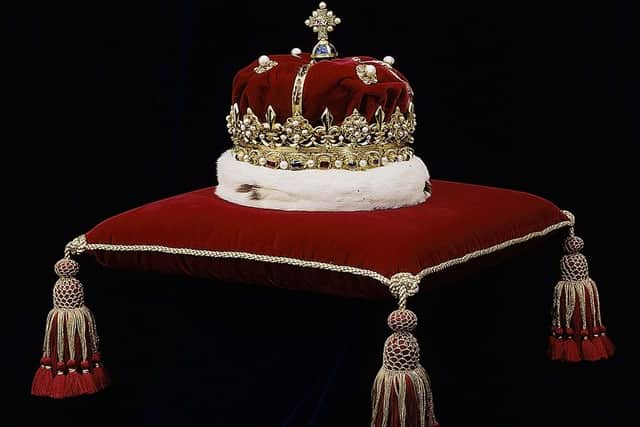What are the Scottish crown jewels? King Charles III prepares for his second coronation in Edinburgh
People in this article
and live on Freeview channel 276
He already has two birthdays, so why not have two coronations? King Charles III and Queen Camilla are already in Scotland this week to undertake some Royal engagements, ahead of tomorrow’s Scottish coronation - an event that not only will include a procession around Edinburgh but also will see the King receive the Honours of Scotland, also known as the Scottish crown jewels.
King Charles III will be presented with the Honours of Scotland - the oldest Crown Jewels in Britain - at a national service of thanksgiving at St Giles’ Cathedral in Edinburgh, and grand processions will file down the Royal Mile. The service forms part of Royal Week, during which the King and Queen, alongside the Prince and Princess of Wales, will continue with a number of engagements across the country.
Advertisement
Hide AdAdvertisement
Hide AdBut the intrigue surrounds what the Honors of Scotland entail, after centuries of the crown jewels making its way across the Scottish border and back down again. They were created during the late 15th and early 16th centuries, specifically during the reigns of James IV and James V, who were the grandfather and father of Mary Queen of Scots.
Before the Treaty of Union in 1707, when Scotland and England merged to form the Kingdom of Great Britain, the Scottish regalia had a significant ceremonial role. In the absence of a resident monarch, the Honours were taken to parliamentary sittings in Edinburgh to signify the sovereign's presence and consent to the passing of each Act.
However, after the Union and the establishment of the UK Parliament in London, the Honours lost their ceremonial significance and were no longer used in such a capacity. The Stone of Destiny was seized by Edward I in 1296 and taken to London, where it remained for about 700 years.
In 1996, Sir John Major's government agreed to return the Stone to Scotland, and it has since been kept in the Crown Room of Edinburgh Castle - and the last time the Honours of Scotland were present and used in a ceremony took place on June 2, 1953, at Westminster Abbey in London at the coronation of Queen Elizabeth II.
Advertisement
Hide AdAdvertisement
Hide AdWhat comprises the Honours of Scotland?


Alongside the Stone of Destiny, which is set to still reside in the Crown Room of Edinburgh Castle, the Scottish crown jewels comprises three other items - the crown of Scotland, the centrepiece of the Honours and represents the sovereignty of Scotland. It is a symbol of royal authority and is adorned with precious gemstones and ornaments.
There is also the Sceptre of Scotland, a ceremonial staff that symbolises the monarch's authority and power. It is typically made of gold and is topped with a decorative finial. Finally, there is the Sword of State; a sword that represents the monarch's role as the defender of the realm.
The Honours will be escorted by the King’s bodyguards for Scotland, the Royal Company of Archers, and a Guard of Honour formed by representatives of the Navy, Army and Royal Air Force.
Will the Scottish coronation of King Charles III be shown on TV?
Much like the coronation that took place in May, the Scottish coronation, including the procession ahead of the ceremony at St Giles’ Cathedral, will be screened live on BBC One at the estimated time of 1pm, ahead of the People’s Procession departing Edinburgh Castle Esplanade at 1:15pm.
Comment Guidelines
National World encourages reader discussion on our stories. User feedback, insights and back-and-forth exchanges add a rich layer of context to reporting. Please review our Community Guidelines before commenting.
